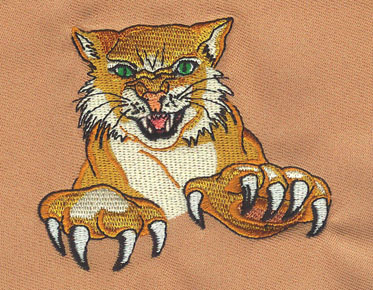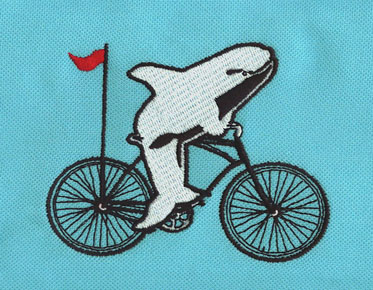Beginner's Guide from Eagle digitizing to Machine Embroidery
Embroidery is a beautiful and customizable way to customize your favorite fabric. From clothing to housewares, you can make your textiles truly yours. Use these guidelines from Eagle Digitizing to know the machine embroidery for your needs.
Learn
more about machine embroidery
Are you new to machine embroidery, or are you just curious about how it works? In this tutorial, we'll walk you through the first steps from downloading a design, importing it into a machine, and then stitching it onto fabric.
Each
machine embroidery design is unique
As an embroiderer, which design you prefer is ultimately a matter of personal preference. However, there are many techniques and methods, some of which are unique to a particular machine, thread, or fabric type. The more you know about your preferred embroidery style, machines, materials, and thread used, the better the end result will be. So make sure you go in with an open mind, but stick to the style you think works best for you.
Look
for machine embroidery designs
The
first step is to find the embroidery design to be sewn with the embroidery
machine. If you cannot find the design you want on your computer, you can
easily download the design from the Web and then upload it to your computer.
The embroidery library is divided into categories suitable for any occasion, as well as digital embroidery documents and automatic digital embroidery documents.
Digital embroidery files: These designs have been "hand-optimized" for digital embroidery by the designer. As a result, these designs tend to produce the best results because they have a well thought out patchwork pattern and are usually higher quality documentation.
Automatic Digital embroidery: These are designs that are digitized using a computer program. These documents are usually not well optimized for machine embroidery, and quality can vary. One tip is to first try these machine embroidery files on a test piece of fabric before using the actual fabric.
Choose
the right size design for your embroidery machine
On the product page, you will be able to find useful information about the document, which is crucial in choosing the right embroidery design. Each design displays its width and height in inches, indicating the size of the design. Make sure the design size is less than or equal to the size of the machine hoop.
For example, a 5 "x4" design won't work with hoops that only have 4 "x4", so you'll need to choose a different design.
Transfer
embroidery design from computer to embroidery machine
When you have selected the machine embroidery file suitable for your machine (see our list of which machine Embroidery format works for), downloaded it and extracted it onto your computer, it is time to connect it to your embroidery machine.
Each embroidery machine brand offers different ways for you to transfer your design to the embroidery machine. Below we provide instructions on how to transfer your design using a USB stick - most embroidery machines support this method. If you normally transfer your design to the machine in a different way, you can of course use the method you like.
Use
USB flash drive transmission
Open
the folder containing the design.
Right-click
on the design, select "Send to", and then select your USB flash
drive. You can also drag and drop designs into folders on your USB drive.
Eject
the flash drive safely, and then pull it out of the computer.
Make
sure you insert the USB stick into the embroidery machine.
Prepare your embroidery design for sewing
Choose
fabric and sewing thread
The first step is to choose which type of fabric you want to stitch the design to. This could be a T-shirt, a tote bag, or a fabric napkin, for example. Be sure to check the instruction manual of the embroidery machine to know what types of fabric and thread are recommended for the available needles. A needle or thread that is too weak for a particular fabric may cause the needle and thread to break. To avoid this and to ensure that you have fun while making, make sure to read the instructions of the embroidery machine before you begin sewing.
Some embroidery files include line color sequence tables. These charts show the threads recommended for the design and usually include the manufacturer and product number. This helps you choose which threads to use.
Hoop
suitable for your design
Be sure to use a hoop that fits the design. Hoops come in different sizes, and your design needs to be smaller than the hoops to get a good end result.
Measuring
fabric
Use a ruler and a fabric marker to mark the area of fabric where the embroidery design will be placed. After selecting an area, it is also useful to mark the center point so that you can easily visualize where the design will be embroidered on the fabric.
Attach
the fabric to the hoop
Different machines have different hoops styles, but they all come with inner and outer rings that can be separated from each other, allowing fabric to be placed between the hoops. When placing fabric in hoops, consider how the machine is constructed and how the hoops are installed in the machine.
One side of the hoop has a small attachment attached to the modular arm of the embroidery machine. It is important to keep in mind the relative positions of the arms and hoop attachments, as the hoop attachments need to be in line with the fabric position, otherwise your design could end up upside down. When placing the fabric, make sure that only one layer of fabric is attached to the hoop, otherwise the embroiderers will stitch it together. Place the fabric on the outer ring. It can be tricky to place it completely straight, but using a ruler and markers can really help. Many embroidery machine hoops also have markings indicating where the center point of the hoop is. This is especially useful when perfect placement is required.
Finally, place the inner ring over the outer ring and fabric, then push them together or attach another hoop so that the fabric is tight. This will hold the fabric in place as you sew.
Place
the fabric into the hoop with a machine embroidery stabilizer
If you use a machine embroidery stabilizer to sew a piece of fabric smaller than the hoop, place the machine embroidery stabilizer on the outer ring first so that it completely covers the entire hoop.
Place the inner ring on the stabilizer and push them together to hold the stabilizer firmly.
Place the fabric on the stabilizer. It can be tricky to get it completely straight, but a ruler, mark in the center of the hoop, and a guide can help.
Now, carefully lift the fabric and spray a little temporary adhesive spray on the back of the fabric. Press the fabric and stabilizer together, this will hold the fabric to the stabilizer while stitching.
Attach
the redundant fabric to the hoop before stitching
Now that the fabric is secured in the hoop, you can almost begin stitching. The important final step is to ensure that all redundant structures are securely attached to your hoop. This is important because you don't want it to get in your way while stitching.
To secure the redundant structure, you simply roll the structure toward the hoop and attach it with something (for example, a fabric pin).
Prepare
your embroidery machine for sewing
Turn on the power supply of the embroidery machine and wait for it to start completely.
Prepare the spines on the embroidery machine according to the instructions. It is important to put the spool into the machine now because once you place the hoop on the machine, it will be covered.
After
the machine and threads are ready, attach the hoop to the modular arm of the
machine according to the instructions of the machine.
Load
the design onto the machine
Insert the USB memory stick into the embroidery machine and stitch the design according to the instructions on the machine. Your machine will know how to stitch it out, so once you press Start, you don't need to do anything further.
An important tip is to make sure your machine starts at the center point you marked. You can check this carefully before you begin stitching by placing the needle down on the fabric to see if it lines up with the middle of the cross. If not, you can simply lift the needle again and reposition the hoop. You can reposition the hoop with the help of a screen on the machine until the needle is centered.
Line
and color change
Many embroidery designs use more than one type of thread, which is what makes them so colorful! For each embroidery design on Creative Fabrica, the product information will include a PDF that indicates how many color variations the design has (i.e. how many threads you need to make the design).
The machine will show you the color it will sew first, so simply thread that color onto your machine. Once the machine has finished this color, it will pause and you will be able to switch the color of the thread.
Start
stitching!
Once the hoop is installed, the thread is in, the presser foot is on the fabric, the design is ready, and it's time to start sewing!
All machines work differently and we strongly recommend that you read how the machine works before you begin stitching.
Pay
close attention to the stitching to avoid mistakes
While the machine will do all the hard work, make sure you keep an eye on its progress to check that everything goes smoothly. If you hear any abnormal sounds, see excess fabric caught in the needle, or the stitching looks strange, you can easily pause the machine to stop the stitching. After the start key is pressed again, the machine will continue stitching from where it left off.
You may sometimes notice that your embroidery machine "jumps" and then starts sewing in another area of the fabric. This is called a "jump pin." These jumpers are sometimes necessary for the machine to begin a new element of embroidery design. They leave loose threads on your design that you can easily remove using scissors during the stitching process (remember to pause the machine first!). , or after the design is finished. Removing wires from jumpers does not break the design because they are designed to be removed.
After
suturing
Your design is now stitched onto the fabric and ready for some final steps before it can be fully appreciated. First, make sure the machine has completed the design, lift the presser foot, and remove the hoop from the machine.
Using a small pair of scissors or shears, remove any jumpers or excess thread.
Remove
the sewing needle and remove the fabric from the hoop. If you used a stabilizer
in your design, simply turn the fabric upside down and peel it away from the
stabilizer (if you used any). Finally, remove the guide mark that was created
to ensure the design was centered. The best way to remove these marks varies from
pen to pen, but most fabric markers will dissolve when ironing designs. Be
gentle when ironing the stitches and make sure the iron is not too hot.
Congratulations, you've just stitched your first embroidery design! We hope you
found some useful tips and tricks from our tutorial.



